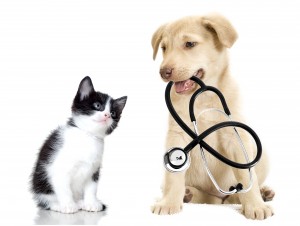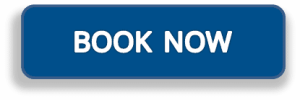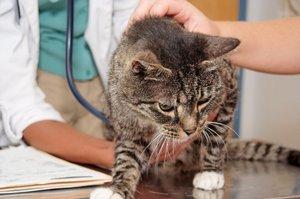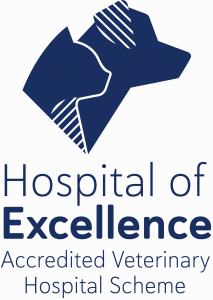General Practice
 Each time your pet comes to see us at WCVH he or she has an examination. It might be as simple as a wound check after surgery or may be a full physical exam if your pet is unwell or in for vaccination.
Each time your pet comes to see us at WCVH he or she has an examination. It might be as simple as a wound check after surgery or may be a full physical exam if your pet is unwell or in for vaccination.
For a full exam we usually start at the nose and work back examining the mouth for any problems such as ulcers of the lips or gums, dental disease such as dental tartar and check that the gums are nice and pink (the gums can be pale with anaemia). Next we check the eyes to make sure the eyelids are normal and there are no inward growing lashes or growths on the eyelids, we make sure the cornea (the surface of the eye) is normal and that the iris (the coloured part of the eye) is normal. Occasionally dark brown-pigmented spots can appear on the iris and these can be age related or indicate a possible melanoma. We also check the lens of the eye to see if this is developing a cataract (cloudiness). Sometimes we use the opthalmoscope to examine the retina of the eye. Then it is on to the ears, we check that there are no crusts or scabs on the pinna (the ear flap) as sometimes flies can bite the ears causing sores and then we check inside the ear for any discharge. Often we use the otoscope to look down the ear canal to the ear drum, especially if the ear has a discharge or we suspect a grass seed is trapped in the ear canal.
Having completed the exam of the head we move on to the chest and listen to the heart and lungs with a stethoscope. We check that the heart rate is normal and there are no heart murmurs (caused by leaky heart valves) present.
If this is all normal we move on to the abdomen where we carefully palpate the internal organs such as the liver, kidneys, spleen and bladder as well as the intestines. An enlarged organ can indicate inflammation or a tumour. Sometimes organs feel small or irregular indicating disease and the need for some tests. Then we check your pet’s temperature with a rectal thermometer. At this point if there are any kids in the room the giggles usually start happening.
Finally we feel all of the lymph nodes situated under the jaw, the shoulders, and inguinal area and at the back of the stifle (knee) and examine the skin for evidence of fleas or infection and we also feel for any lumps or bumps. If we find any growths we often take a sample using a fine needle to assess if the lump is of concern or can be left without further investigation. We also palpate the muscles of the body to check for any swelling or loss of muscle or any unevenness of muscle from one side to the other.
If your pet has a problem with a limp or seems to be sore we do a much more thorough exam of the legs, back and neck to try to locate the source of the discomfort, although quite often the excitement of coming to the vet and the unfamiliar surroundings suddenly makes them very brave and it is much harder to locate the problem area.
During a routine health check we also make sure that all the relevant routine preventative medications such as worming, heartworm, flea control and vaccinations are all up to date and that your pet’s weight is healthy. Like humans pets these days are often overweight and can suffer similar health problems to humans as a result.
The examination is also the perfect time to raise and concerns or questions you have about your pet’s health or behaviour.



